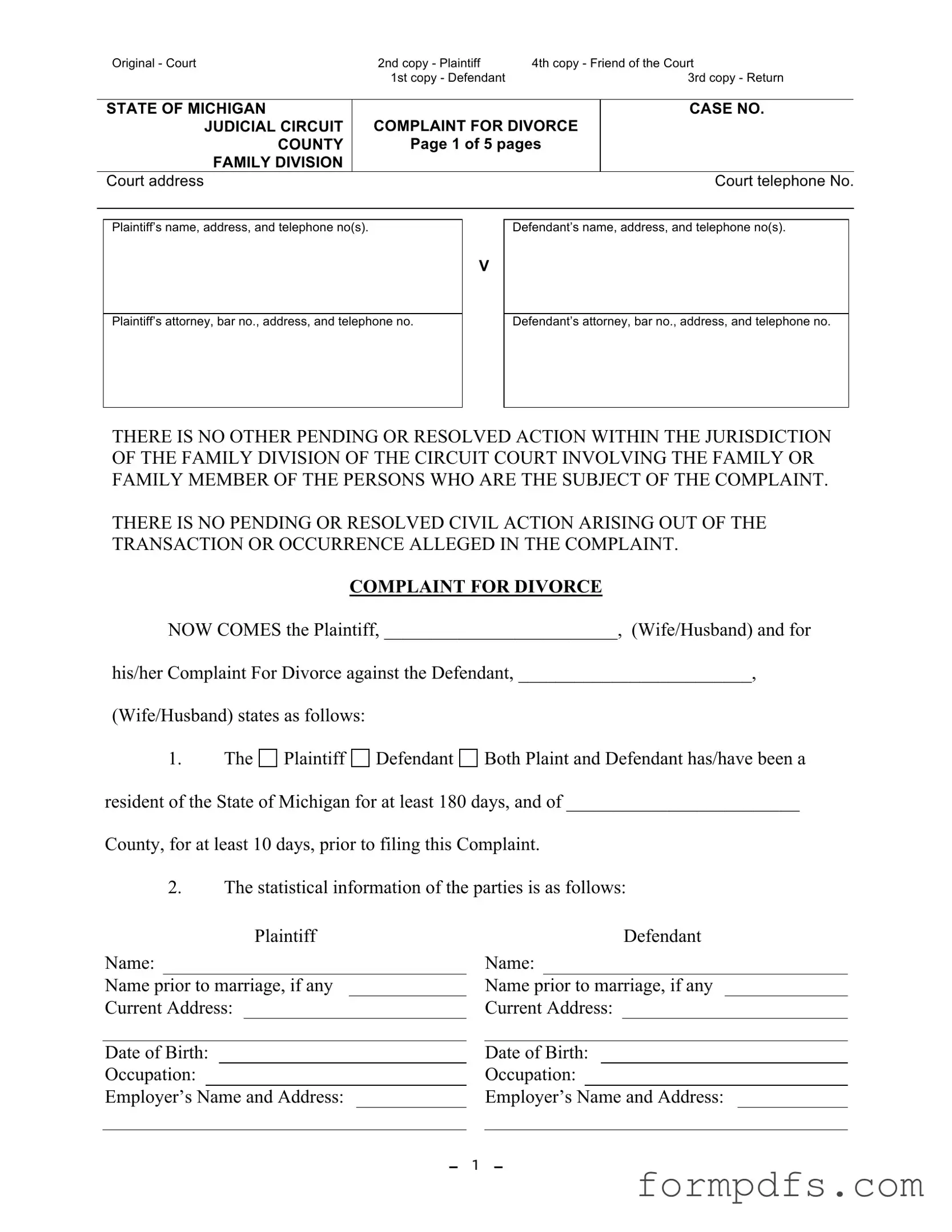What is the Michigan Complaint Divorce form?
The Michigan Complaint Divorce form is a legal document used to initiate a divorce proceeding in Michigan. It outlines the details of the marriage, including the names and addresses of both spouses, the date of marriage, and information about any children involved. This form must be filed in the family division of the circuit court in the appropriate county.
Who can file the Complaint for Divorce?
Either spouse can file the Complaint for Divorce, but certain residency requirements must be met. At least one spouse must have lived in Michigan for at least 180 days and in the county where the complaint is filed for at least 10 days before submitting the form. This ensures that the court has jurisdiction over the case.
What information do I need to provide in the form?
The form requires several pieces of information. You will need to provide your name, address, and telephone number, as well as your spouse's information. Additionally, you must include details about your marriage, such as the date of marriage and any children from the union. If you have property or debts to divide, that information should also be included.
What happens after I file the Complaint for Divorce?
Once you file the Complaint for Divorce, the court will issue a case number and schedule a hearing. Both parties will need to be notified of the proceedings. If there are children involved, the court may require a parenting plan. You may also need to attend mediation to resolve any disputes regarding custody or property division.
Can I restore my maiden name through this form?
Yes, if you wish to restore your maiden name as part of the divorce proceedings, you can request this in the Complaint for Divorce form. You will need to provide your maiden name in the appropriate section. If you do not wish to restore your name, you can simply indicate that no name change is requested.
